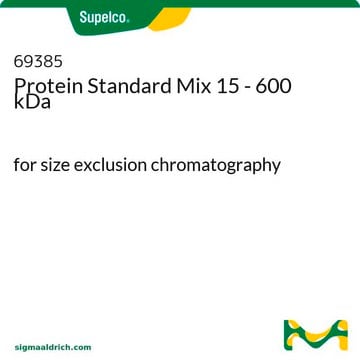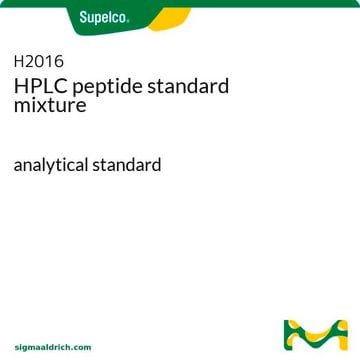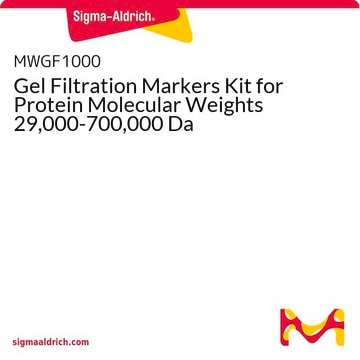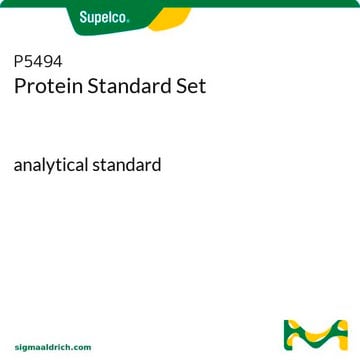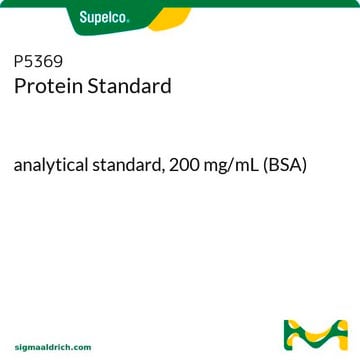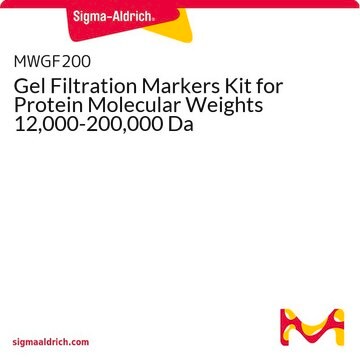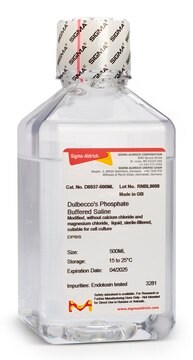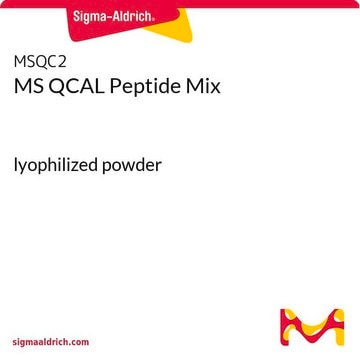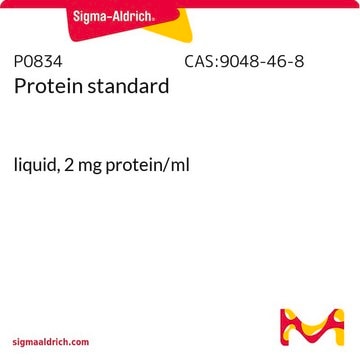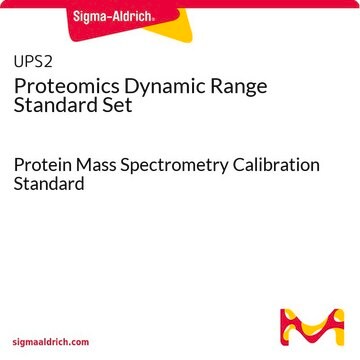Products may be shipped at a different temperature than the recommended long-term storage temperature. If the product quality is sensitive to short-term exposure to conditions other than the recommended long-term storage, it will be shipped on wet or dry-ice. If the product quality is NOT affected by short-term exposure to conditions other than the recommended long-term storage, it will be shipped at ambient temperature. As shipping routes are configured for minimum transit times, shipping at ambient temperature helps control shipping costs for our customers. For more information, please refer to the Storage and Transport Conditions document: https://www.sigmaaldrich.com/deepweb/assets/sigmaaldrich/marketing/global/documents/316/622/storage-transport-conditions-mk.pdf
推荐产品
等级
analytical standard
质量水平
表单
solid
分析物化学类别
amino acids, peptides, proteins
技术
HPLC: suitable
应用
food and beverages
包装形式
multi-component solution
储存温度
−20°C
应用
包装
警示用语:
Danger
危险声明
预防措施声明
危险分类
Resp. Sens. 1
储存分类代码
11 - Combustible Solids
WGK
WGK 3
个人防护装备
Eyeshields, Gloves, type N95 (US)
其他客户在看
-
How is shipping temperature determined? And how is it related to the product storage temperature?
1 answer-
Helpful?
-
-
How can I determine the shelf life / expiration / retest date of this product?
1 answer-
If this product has an expiration or retest date, it will be shown on the Certificate of Analysis (COA, CofA). If there is no retest or expiration date listed on the product's COA, we do not have suitable stability data to determine a shelf life. For these products, the only date on the COA will be the release date; a retest, expiration, or use-by-date will not be displayed.
For all products, we recommend handling per defined conditions as printed in our product literature and website product descriptions. We recommend that products should be routinely inspected by customers to ensure they perform as expected.
For products without retest or expiration dates, our standard warranty of 1 year from the date of shipment is applicable.
For more information, please refer to the Product Dating Information document: https://www.sigmaaldrich.com/deepweb/assets/sigmaaldrich/marketing/global/documents/449/386/product-dating-information-mk.pdfHelpful?
-
-
Could you provide an order of retention times of when each of these components elute off a protein C4 column (H2899 protein mixture)? Thank you.
1 answer-
The exact method is considered proprietary. However, for a C4 column, it should elute ribonuclease A first, followed by cytochrome C, holo-transferrin, and apomyoglobin.
Helpful?
-
-
What is each componant's actual molecular weight (ribonuclease A, cytochrome c, holo-transferrin and apomyoglobin)?
1 answer-
The molecular weight of each component is not reported. See below for the expected values:
Ribonuclease A: approx. 13.7 kDa
Cytochrome C: approx. 12.3 kDa
holo-Transferrin: 72.1 - 78.5 kDa
Myoglobin: approx. 17.6 kDaHelpful?
-
Active Filters
我们的科学家团队拥有各种研究领域经验,包括生命科学、材料科学、化学合成、色谱、分析及许多其他领域.
联系技术服务部门